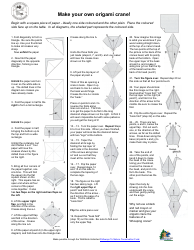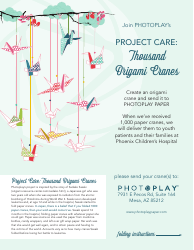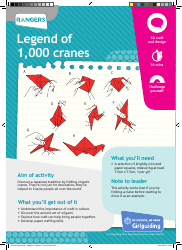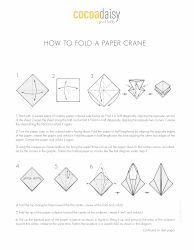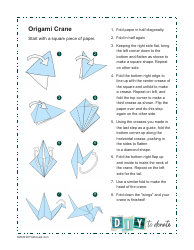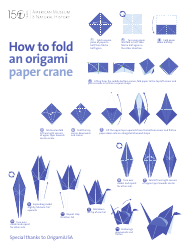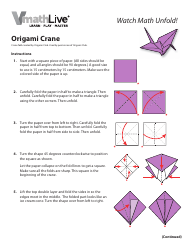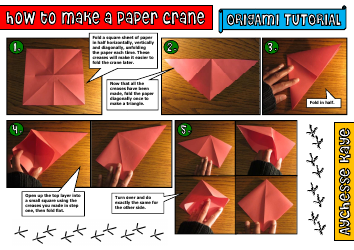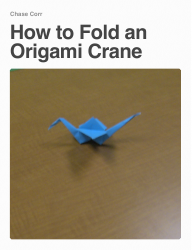Origami Crane - Focus on the Family
The Origami Crane - Focus on the Family is a popular project among families, particularly in the USA. The origami crane is often used as a fun, interactive and educational activity for parents and children to do together. The crane is widely recognized in Japan and around the world as a symbol of peace, love, and longevity. By working on the project together, it encourages family bonding, teaches patience, attentiveness, and the importance of precision. It also promotes cultural awareness and understanding as families learn about the historical and cultural significance of the crane in Japanese tradition. Additionally, the crane can be used as a DIY decorative piece or given as a handmade gift.
The document "Origami Crane - Focus on the Family" is not filed by a specific country or individual. Instead, it is a part of the resource materials provided by the "Focus on the Family" organization, which is a global non-profit organization based in the United States. They provide this document as a guide to create origami cranes, often for family-oriented activities or educational purposes.
FAQ
Q: What is the meaning of the Origami Crane?
A: The Origami Crane is a symbol of peace and hope, deriving from the ancient Japanese legend that promises a wish to anyone who folds a thousand origami cranes.
Q: What's the connection between Origami Cranes and Focus on the Family?
A: Focus on the Family is a Christian ministry dedicated to family support. While origami cranes per se might not directly connect to their work, they could be used in family-building activities or as symbols in lessons or stories.
Q: What paper is used for the Origami Crane?
A: While any square piece of paper can be used, traditional origami paper, or 'kami', is often chosen for its thinness and ability to hold a crease, which makes it easier to fold.
Q: Why are Origami Cranes associated with peace?
A: This association comes from Sadako Sasaki, a Hiroshima bombing survivor who folded cranes hoping for peace and recovery from her radiation sickness. Following her death, she became a symbol of the innocent victims of nuclear warfare, and the cranes she folded a symbol of peace and hope.











